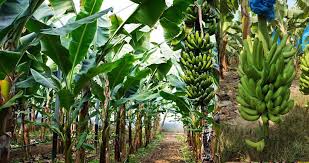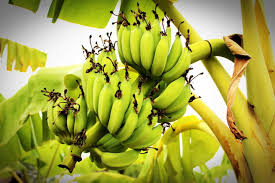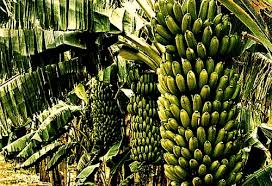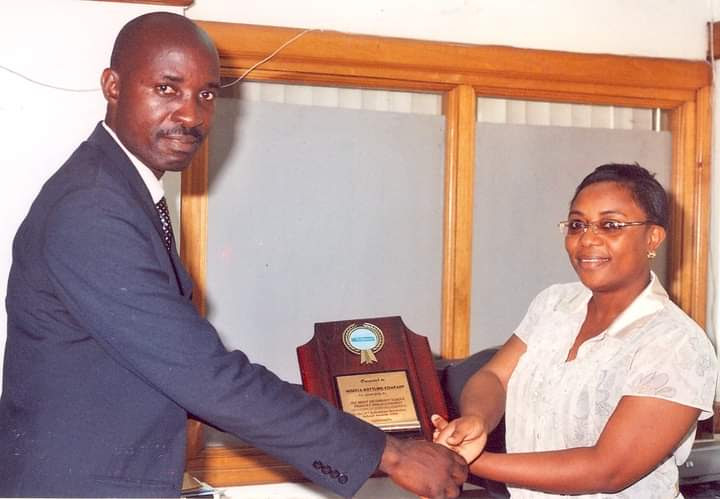![]()
If you’ve landed on this article page, you’re probably searching for a
good business idea—an idea that’s light on the pocket but heavy on
returns, promising both a fulfilling journey and potential profit.
|
How to Start Banana Farming in Nigeria
Banana farming is the cultivation of banana crops for commercial
purposes. Bananas are tropical plants that produce a fruit rich
in carbohydrates, vitamins, and minerals, and they are among the
world’s most important crops, both as a food source and as a
major export commodity.
Banana farming in Nigeria and Africa involves cultivating
different varieties of bananas to meet different needs. Here are
some of the types of bananas used for banana farming in Nigeria
and Africa:
Dessert Bananas: These are the most popular type of bananas and
are the ones commonly found in grocery stores. They are sweet
and typically eaten raw.
Cooking Bananas: These bananas are not as sweet as dessert
bananas and are firmer in texture. They are typically used in
cooking and can be boiled, roasted, or fried.
Plantain Bananas: Plantain bananas are a type of cooking banana
that is widely used in West Africa. They are bigger and firmer
than regular cooking bananas and are often used in savory
dishes.
Red Bananas: These bananas have a reddish-purple skin and are
sweeter than other varieties. They are often used in desserts
and smoothies.
Cavendish Bananas: Cavendish bananas are the most popular type
of banana globally, and they are commonly used in commercial
farming. They are resistant to most diseases and pests, making
them easier to cultivate.
Lady Finger Bananas: These bananas are smaller and sweeter than
regular bananas and are often used in desserts.
Apple Bananas: These bananas have a slightly tangy flavor and
are often used in smoothies and salads.
The type of banana used for banana farming depends on the
intended use, climate, soil type, and disease resistance of the
variety.
Commercial farmers typically use the first two of the four
materials available for banana planting. Let’s weigh every
option:
Suckers, aka pups, are offshoots growing from a plant’s base.
Most commercial plantations prefer suckers with an extensive
rhizome system and rapidly growing conical buds. While suckers
share the same genes as the parent plant and yield much faster
than seeds, they may harbor diseases or nematodes and produce an
uneven harvest.
Fertilizer Application To Banana Plants
To grow and produce well, the crop needs a balanced fertilizer,
like one with an 8-10-8 NPK rate. Nitrogen is essential for
early growth, and potassium promotes disease resistance and
fruit development. Compost, well-rotted manure, or bone meal are
suitable organic alternatives to synthetic fertilizers.
The banana plants go through three main growth stages:
vegetative growth (around 6 months), flowering (around 3
months), and fruit development (around 3 months). So, the time
between planting and harvesting typically ranges from nine to
twelve months, depending on the variety’s maturation period and
local growing conditions. Unlike apples and other fruits with a
distinct growing season, bananas are always in season.
Site Preparation and Planting
Prepare the selected site by clearing the land, removing weeds,
and digging planting holes. Ensure proper drainage as bananas
thrive in well-drained soil. Plant the seedlings at the
recommended spacing, typically 2 to 3 meters apart, and provide
adequate water and nutrients for healthy growth.
Farm Management
Harvesting and Marketing
Banana plants typically start bearing fruit within 9-12 months.
Harvest the bananas when they reach the desired size and color.
Establish marketing channels through local markets, wholesalers,
or direct sales to consumers. Building strong networks and
ensuring efficient distribution will contribute to the
profitability of your banana farming venture.
Cultural Practices in Banana Production
Cultural practices play a vital role in maximizing the yield and
quality of bananas. Some key cultural practices include:
Soil Preparation and Fertilization
Prepare the soil by plowing or digging to a depth of at least 30
centimeters. Incorporate organic matter such as compost or
well-rotted manure to enhance soil fertility. Conduct a soil
test to determine the specific nutrient requirements and apply
fertilizers accordingly.
Irrigation
Bananas require consistent moisture levels for optimal growth.
Depending on the climate and rainfall patterns in your area,
consider installing an irrigation system, such as drip or
sprinkler irrigation, to ensure regular water supply to the
plants.
Mulching helps conserve soil moisture, suppress weed growth, and
regulate soil temperature. Apply a layer of organic mulch, such
as dried leaves or straw, around the base of the banana plants.
When And How To Harvest Bananas
Growers harvest bananas before they are fully ripe. Dwarf
varieties take about 11–14 months from planting to harvest,
while taller varieties take about 14–16 months. The typical
shoot-to-harvest period for a bunch is 3–4 months. Indications
that it is time to harvest include the top leaves drying out, a
change in the fruit’s color from dark green to light, and the
blossom end falling off with just a touch. The fruit becomes
plump and completely filled in.
Financial requirements
To establish the plantation 10 Acre land can be used for a
start. All projections therefore, are based on 10 Acres.
Revenue projection
Under good management, one sucker planted initially will produce
one bunch of plantain and banana per annum. This gives a total
of 10,000 bunches per annum. A bunch of plantain will sell for a
minimum of N1, 000.
This gives us total revenue of N10 million per annum starting
from the 18th month after planting. Cost of maintenance per
annum is estimated at a million naira.
Banana farming is a profitable agricultural venture in Nigeria
and Africa, with numerous opportunities for income generation,
employment, and economic growth. However, it requires
significant investment in time, resources, and expertise to
achieve success. The potential for disease, pest infestation,
and adverse weather conditions can present significant
challenges, but these can be mitigated through effective
planning and management.
One interesting thing about this venture is that you only need
to plant once after which you will keep harvesting for a period
of 10–15 years. It does not require constant weeding.
Ultimately, with careful planning, efficient production
practices, and effective marketing strategies, banana farming
can be a lucrative business opportunity that supports food
security and economic growth in the region.
Get our Practical guide on how to start a lucrative Banana
Farming Business in Nigeria. You will learn the ways of
increasing yields, improving fruit quality, and streamlining
processes for maximum profit. Promoters will no doubt have over
N8 million as profit every year. Plantain plantations can last
for a very long time if it is well maintained.. The project is
recommended without any reservation. Serious minded investors
can be guided to successfully establish the project.
|







